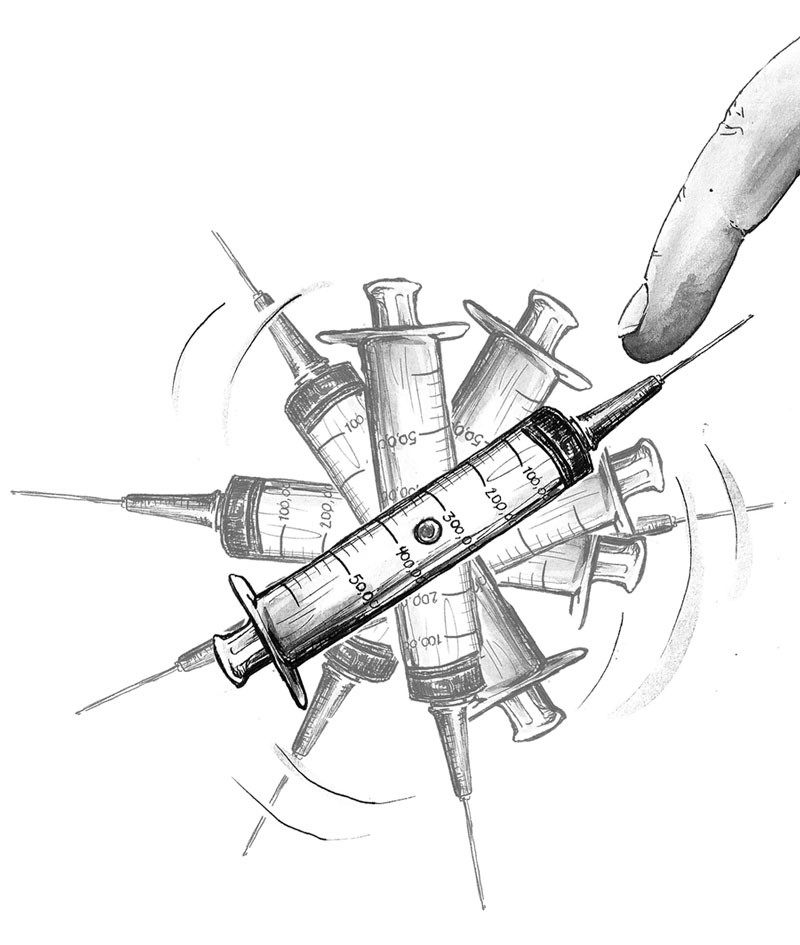
Earlier this year, Prime Minister Stephen Harper was faced with the decision of whether to extend the exemption from Canada’s drug laws (the Controlled Drugs and Substances Act) for Vancouver’s Safe Injection Site (InSite). InSite has been generating much attention for its unconventional approach to drug abuse, giving users a safe, clean space to shoot up and access to medical attention and addiction counseling.
Harper’s objection to InSite, shared by many social conservatives, is ideological: he believes that drug addiction is primarily a criminal issue and should be treated as such through strict enforcement of the laws. Social conservatives see InSite as a form of appeasement—-giving the addicts what they want, thereby encouraging rather than combating drug use. But the available research says otherwise, showing that InSite not only reduces public drug use and needle-sharing, but also encourages addicts to enter into treatment more frequently than those who don’t use the site. For Harper the question was simple: should he follow the dictates of his ideology and force Vancouver back to a policy of strict enforcement, or continue to fund a successful and innovative program that was having a positive impact?
Vancouver’s Downtown Eastside is home to 16,000 people, one quarter of whom are injection drug users. The area, the poorest postal code in Canada, has epidemic levels of HIV/AIDS and Hepatitis C infection, both of which are commonly spread through shared needles. In 2000, in response to what was becoming an out-of-control health crisis, as well as a serious public disorder problem, then-Mayor Phillip Owen presented Vancouver City Council with a “Framework for Action: A Four Pillar Approach to Vancouver’s Drug Problems.” The program’s four pillars were prevention, treatment, enforcement and harm reduction. Owen described the framework as a “coordinated, comprehensive approach that balances public order and public health in order to create a safer, healthier community.” In a sense, the program was an acknowledgment that criminalization of the issue was not improving the situation—-drug possession may be a crime, but drug addiction is not. Addiction is a health issue, and is more effectively treated as such.
The most controversial aspect of the program was the creation of the Safe Injection Site, which was proposed under the harm reduction component of the program. As its name suggests, the idea behind the site was to reduce the harm brought on by drug addiction, both to the addicts themselves and to the communities in which they live. Opponents of the site argued that it would draw more drug addicts to the area, increase crime, and be a deterrent to those who wished to quit using drugs. Proponents argued that it would help stem the flow of disease in the area by providing addicts with clean needles and a safe, supervised and clean area to inject, while at the same time providing addicts with access to health care professionals and addictions counselors, whom they might not otherwise seek out. In 2001, Vancouver City Council approved Mayor Owen’s plan and, with an exemption from Canada’s drug laws, InSite opened in September 2003.
In the three years since it opened, more than a dozen studies have been conducted on the effectiveness of InSite. These studies have noted:
- a reduction in public drug use;
- a reduction in litter such as dirty needles;
- a reduction in needle sharing and, by extension, a reduction in the risk of transmission of certain diseases;
- of the 453 overdoses that have occurred within InSite, not one individual died;
- no increase in either crime or the number of drug addicts in the area (these had been fears of those who objected to the program); and
- a greater likelihood, among those who frequented InSite once a week, to enter detox and treatment programs than those who did not use the facility.
Despite this evidence (all of it published in peer-reviewed journals and available at the InSite For Community Safety website, and supported by similar conclusions drawn from the European and Australian experiences with safe injection sites), opponents continue to argue that the site is not working and will never work. In a recent online debate sponsored by the Globe and Mail, former Conservative/Alliance/Reform MP for Abbotsford, Randy White, a longtime critic of the city’s drug policies, proclaimed, “Vancouver has become even more problematic with crime and addiction. HIV is not going down and more addicts are gathering in the east side. The injection site has contributed to the problem.” When pressed by one of the questioners about the mounting evidence that countered these claims, White dismissed the studies as biased, repeated his unfounded claims, and then touted a not-yet-released study that, he said, was not biased and that backed up his position.
I recently met with similar reactions while debating the issue online with some socially conservative bloggers. After providing a commentator with concrete statistical evidence of InSite’s success, I was told that InSite’s success rate did not matter because my sparring partner did not, and never would, believe that the governing philosophies would work in helping to alleviate the situation—-regardless of any proof saying otherwise. This prompts the question: if solid evidence will not change an ideologue’s stance on an issue, what will? Is maintaining an ideological position more important to people than actually solving a particular problem?
Returning to the Globe and Mail debate, another commentator, who worked in the Downtown Eastside, said that the positive effects of the safe injection site were obvious and visible. Randy White’s response was a total rejection of that person’s experiential knowledge. He stated, “That is completely incorrect. Either that or you are not looking. This injection site is small. It is one of a kind. It is not eliminating drug activity on the streets—-and anyone living, working or walking through the area will tell you that.” White’s ideology would not allow him to accept the validity of his challenger’s own first-hand experience.
Social conservatives argue that criminalization is the only way to solve this problem and that anyone who believes otherwise is either dishonest or misinformed. But criminalizing drug addicts has proven to be an ineffective and costly response to drug addiction. The US spent $35 billion fighting the “war on drugs” in the first several months of 2006 alone, while drug arrests, for both trafficking and possession, tripled between 1980 and 2004 to over 1.7 million. The US has the highest incarceration rates in the developed world—-the fruit of their “criminalize the user” approach. Why continue with an approach that has clearly failed when we have mounting evidence that something else works better?
InSite’s success has won it considerable support from a wide variety of individuals and organizations from across the political spectrum, including the Vancouver City Police, local business associations, social workers, local MPs and MLAs, three former mayors (including Owen, Senator Larry Campbell and former BC Premier Mike Harcourt), the current mayor Sam Sullivan, the Premier of British Columbia Gordon Campbell, and Health Canada. A recent Decima Research survey also found that 56 percent of Canadians, and 64 percent of British Columbians, support the creation of additional safe injection sites. To say that support is overwhelming is an understatement, yet this makes no difference to the ideologues. “Appeasement,” one blogger told me, “didn’t work with Hitler, nor will it work with terrorists, so why would it work with drug addicts?”
Ideologies have their role in any society. They provide us with different lenses through which to view and understand the world. The danger, however, is in elevating our ideologies to the point where we become unwilling to absorb information that challenges our core beliefs. Maintaining absolute certainty in the face of contradictory evidence is the surest sign of a closed mind—-and given the seriousness of the problems we face as a society and a species, closed minds are a luxury we can ill afford. No ideology, whether of the left or the right, has ever solved all the problems of any society, and none ever will. InSite will not solve the drug problem of the Downtown Eastside, but it is a step in a positive direction, and as such, the program should be expanded to help cities nationwide deal with their citizens’ addiction problems.
When Harper finally ruled on InSite, he provided only a short exemption in order to better study the issue. He also put a moratorium on the creation of any further safe injection sites in Canada. The question now becomes: if the research continues to prove InSite’s success, will he endorse the program and look to open more safe injection centers, or will he continue to allow his ideology to trump what has been proven to work, while addiction continues to ravage the inner cores of our largest cities?
Peter Dodson is a freelance writer living in Saskatoon. He posts regularly to his blogs at dodosville.blogspot.com and nomoretalkingpoints.blogspot.com.
To start your subscription immediately, call (306) 525-2949, email us, or subscribe online.






